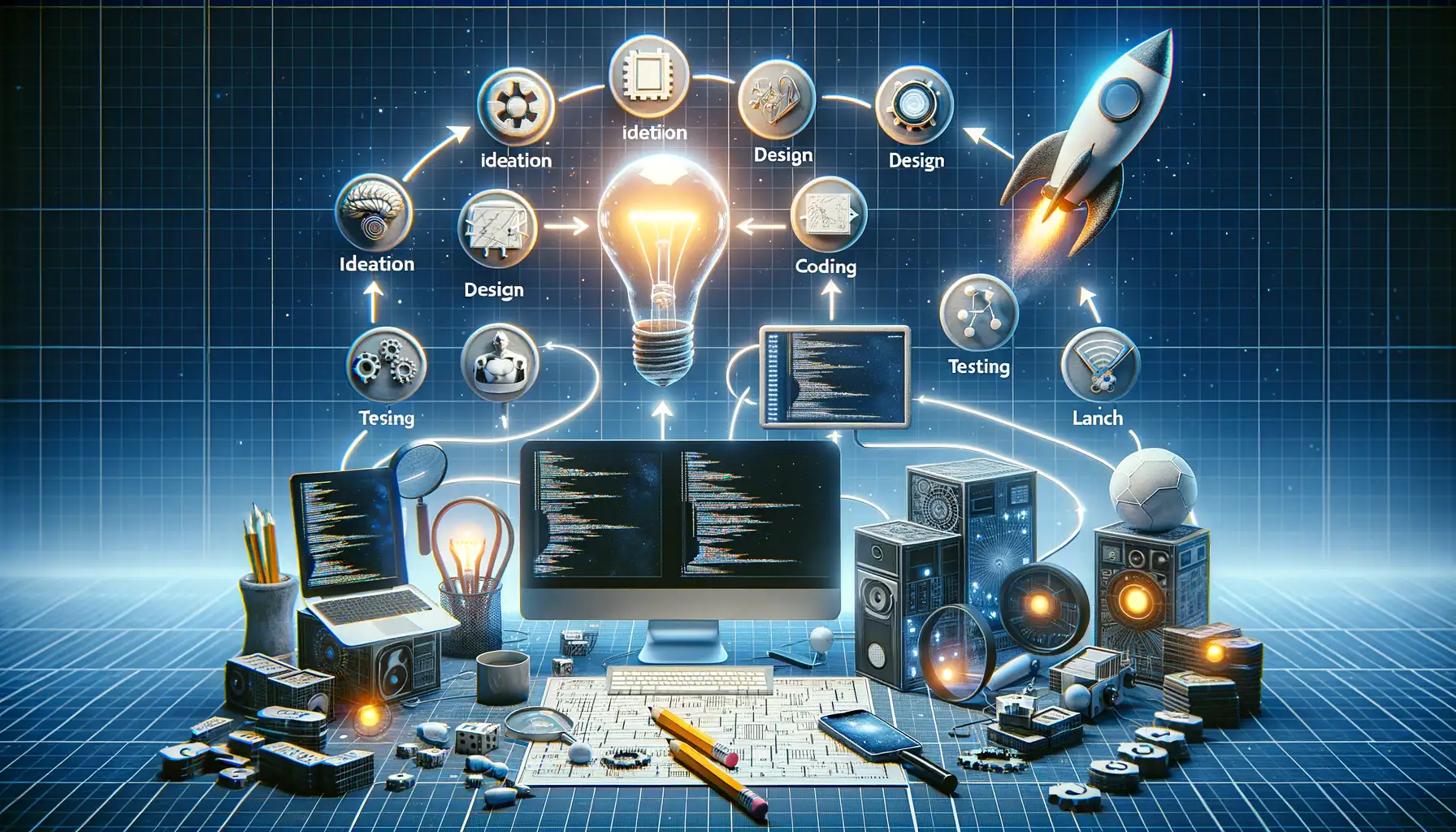Key Features of AI-Powered Mobile Apps for Remote Work
Smart Features That Redefine Remote Work
Imagine having a personal assistant in your pocket—only this one doesn’t need coffee breaks! AI-powered mobile apps bring a new level of brilliance to remote work by offering features that feel almost magical. Let’s dive into what makes them irresistible.
- Intelligent Task Management: Forget the endless juggling act. These apps analyze your priorities and deadlines, automatically suggesting the perfect schedule—like an invisible hand organizing chaos!
- Real-Time Collaboration: Picture working with colleagues across the globe in perfect sync. From live document editing to seamless video calls with subtitles, AI makes teamwork feel local, even when it’s not.
- Personalized Productivity Insights: Think of it as your productivity coach. These apps monitor your work patterns—yes, it’s like they’re watching you (in a good way!)—and suggest ways to optimize time or reduce burnout.
AI’s Everyday Superpowers in Action
The beauty of these apps lies in their everyday heroics. Need to scan a 10-page PDF? Boom—AI-powered OCR extracts the data in seconds. Struggling to cut through language barriers? Real-time translators like your personal polyglot have got your back.
But it’s not all work and no play. AI also boosts creativity: brainstorm ideas, auto-generate content, or craft polished reports with just a few taps. It’s like having a Swiss Army knife for your workday—versatile, reliable, and always within reach.
How AI Enhances Remote Work Productivity

Boosting Focus and Efficiency with AI
Picture this: it’s Monday morning, and you’re drowning in emails, juggling tasks, and trying to keep your projects on track—all from your living room. Enter AI-powered mobile apps, the unsung heroes of remote work. These tools don’t just organize your day; they amplify it.
AI assistants like personalized schedulers predict your work patterns, automatically sealing those pesky time gaps between meetings that eat up your energy. No more guessing which task deserves priority—AI is your productivity coach, helping you stay laser-focused by suggesting what needs attention now versus later.
AI chatbots also act as the ultimate sidekick for communication overload. They filter incoming messages, organizing what’s urgent and who can wait. It’s like having a digital gatekeeper, ensuring you spend time where it matters most.
- Need a quick brainstorming buddy? Apps with AI-driven idea generators can suggest creative solutions in seconds.
- Struggling with language barriers or jargon-heavy reports? AI translation and document analysis tools have got your back.
Seamless Collaboration Powered by Smart Tools
If teamwork makes the dream work, then AI-enhanced collaboration tools are the dream boosters. Imagine sharing an idea during a virtual meeting, and AI instantly transcribes—and even refines—it into actionable notes.
With AI, you’ll never miss a deadline. Intelligent project management apps analyze team workloads, deadlines, and efficiency trends to allocate tasks smarter than any old-school planner ever could. And forget about hunting through endless files—AI brings you the precise document or insight you need with one search, using context-aware algorithms.
This isn’t just tech; it’s transformation. Remote work doesn’t feel so remote when AI bridges every gap seamlessly. From morning hustle to clock-out time, these smart tools let you focus not on surviving the workday but truly thriving in it.
Top Tools and Technologies Used in Development

Your AI App’s Secret Sauce: The Must-Have Tools
When it comes to developing an AI-powered mobile app that redefines productivity, the tools and technology you use are like the spices in a chef’s pantry—they make or break the dish. Think of these tools as your ultimate sous-chefs, ready to bring your creative visions to life while tackling the unique demands of remote work.
Machine Learning Frameworks are the bedrock of any AI-driven app. If you’re diving deep into productivity optimization, frameworks like TensorFlow and PyTorch are your go-to wizards for training algorithms to think like humans (or better).
Need fast, real-time decisions? Call in the power players:
- Edge Computing for lightning-fast processing on mobile devices—no internet dependency.
- Apple’s Core ML or Google ML Kit for seamless integration with iOS and Android.
Collaboration Made Smarter With Cloud Integration
Imagine storing enormous datasets without ever worrying about hitting a wall. That’s what services like Amazon Web Services (AWS) and Google Cloud AI offer—endless scalability paired with robust security. For team communication tools? APIs like Slack’s SDK weave interactivity directly into your app.
The secret ingredient? A sprinkle of natural language processing (NLP) magic! Tools like OpenAI’s APIs give apps the ability to understand user commands in plain English. It’s not just tech; it’s empowerment in your pocket.
Steps to Building an AI-Driven Mobile Application

Crafting the Blueprint for Your AI-Powered App
Imagine building an AI-driven mobile app as if you were sculpting a masterpiece—you need vision, precision, and just the right tools. The process may feel intricate, but with each step, you’re one brushstroke closer to brilliance.
First, start with research: Who is your audience? Are they remote workers struggling to organize tasks or team leaders craving smarter collaboration tools? Understanding their pain points is your north star.
Next, design is key. Sketch out your app’s core features. Will it integrate a virtual assistant for scheduling, or tap into natural language processing for real-time transcription? Keep your design user-first, weaving in functionality with simplicity.
- Data is the fuel: Collect relevant datasets—clean, diverse, and scalable—to train your AI. Quality data leads to quality outcomes.
- Pick your tech stack: From TensorFlow to PyTorch, your AI frameworks and programming languages are like the plumbing behind a luxury house. Choose wisely.
Fine-Tuning and Launching Your Digital Genius
Now comes the heart of it all: development. Train your algorithms relentlessly. Test them against real-world scenarios. When your AI stumbles, tweak, retrain, repeat. Think of it like teaching a child a new skill—it takes patience and persistence.
Then, wrap everything together with UX/UI testing. Visual appeal matters—no one wants to navigate through a clunky interface. Finally, launch with a soft roll-out to gather feedback. It’s not just an app; it’s a living, learning entity shaped by every user interaction.
Challenges and Future of AI in Remote Work

Why AI Isn’t a Magic Wand for Remote Work
The rise of AI in mobile apps is like discovering a secret ingredient for productivity—powerful, but not always easy to master. On the surface, it may seem like AI can solve every problem, but the reality is more nuanced. Take language translation tools in remote collaboration apps, for example. They might connect team members across the globe, but subtle cultural tones or idiatic expressions? Those often get lost in translation.
AI systems also demand vast amounts of data to function well, and here’s the rub: what happens when privacy concerns collide with this need for data? Companies must walk a tightrope between leveraging information and respecting user confidentiality—a challenge that no algorithm can fully automate away.
- Bias in AI Models: Not all AI is created equal. Training data can reflect real-world biases, which then seep into decision-making processes.
- Human-AI Interaction: Ever been frustrated by a chatbot that couldn’t understand your question? Successful AI requires fine-tuned human oversight and empathy.
What the Future Could Look Like
Picture this: AI enabling remote teams not only to work but to thrive as if they’re in the same room. Imagine tools that adapt to personal work styles or predict burnout before it happens. The future promises more intuitive AI systems capable of bridging the gaps we currently struggle to close. But only if we build them wisely.
